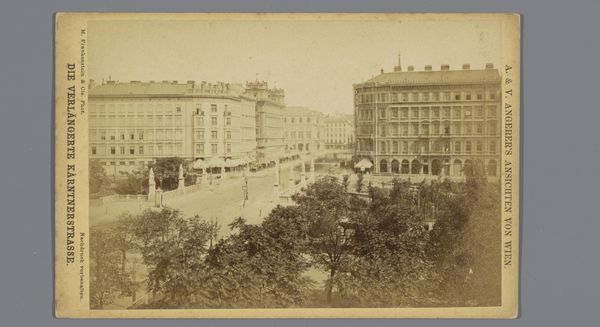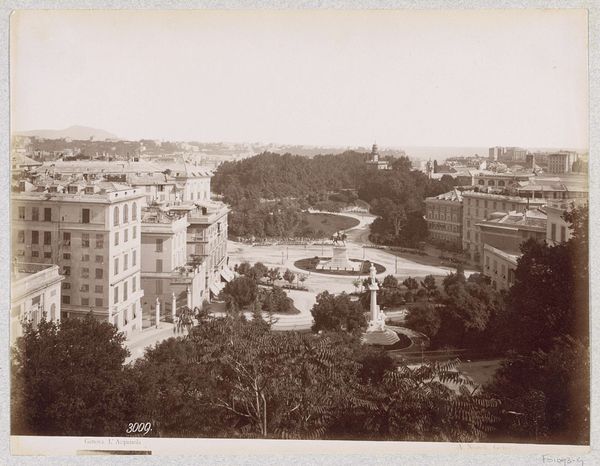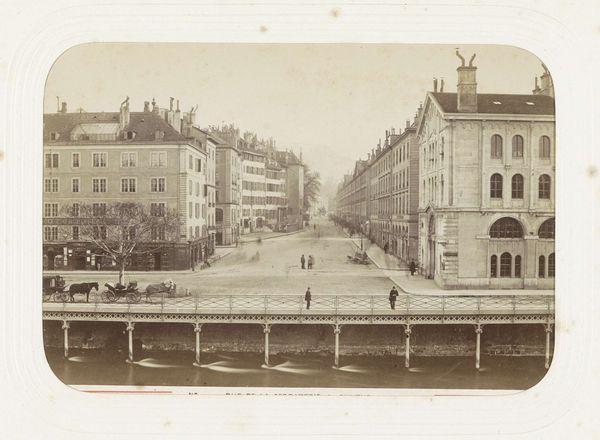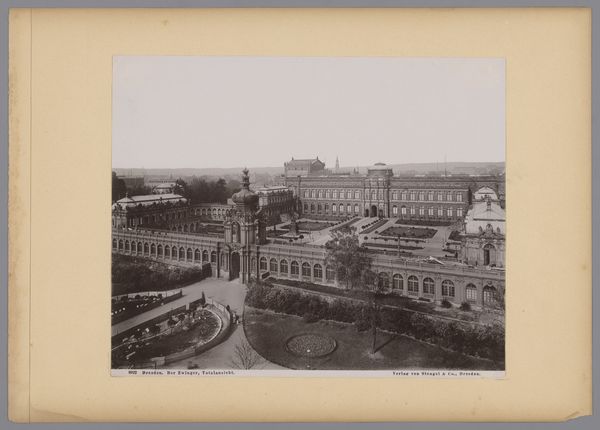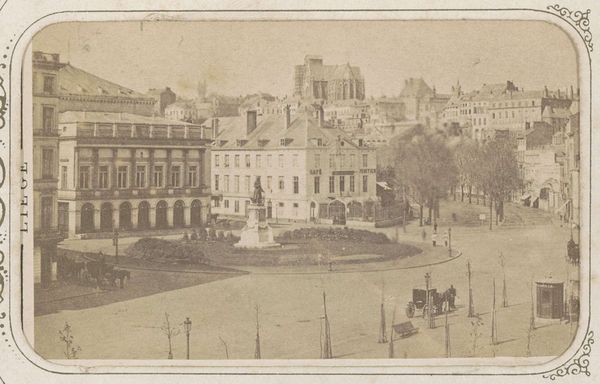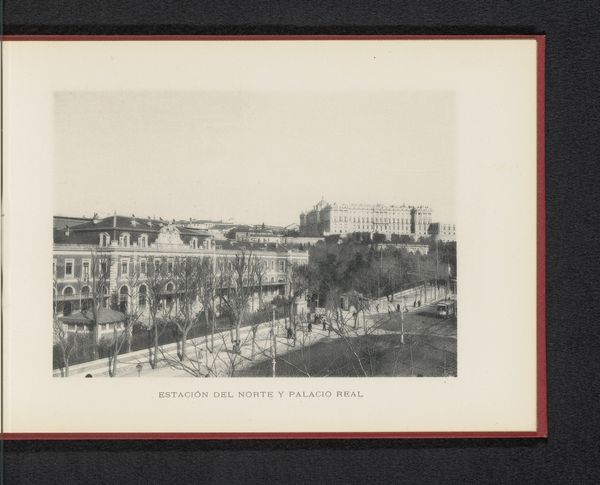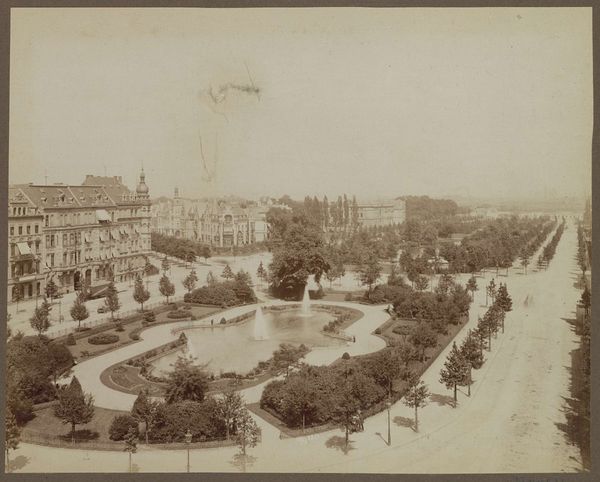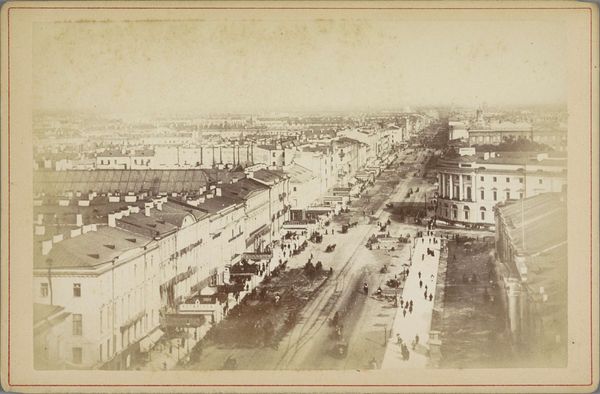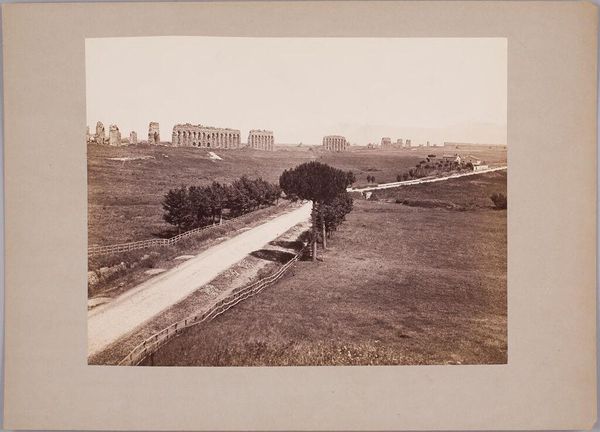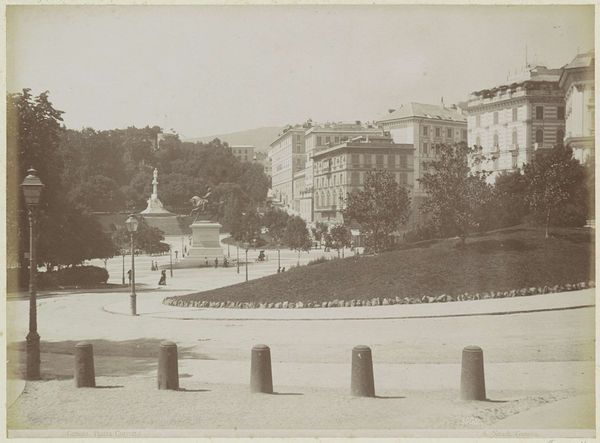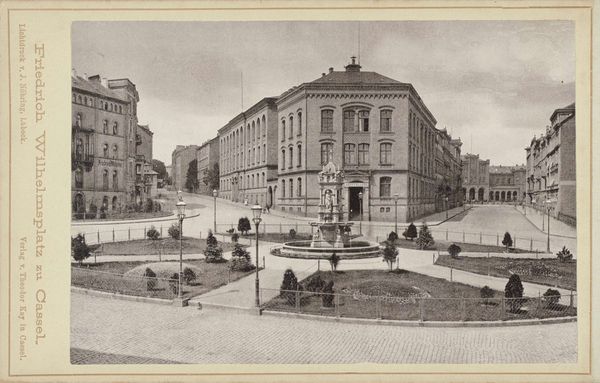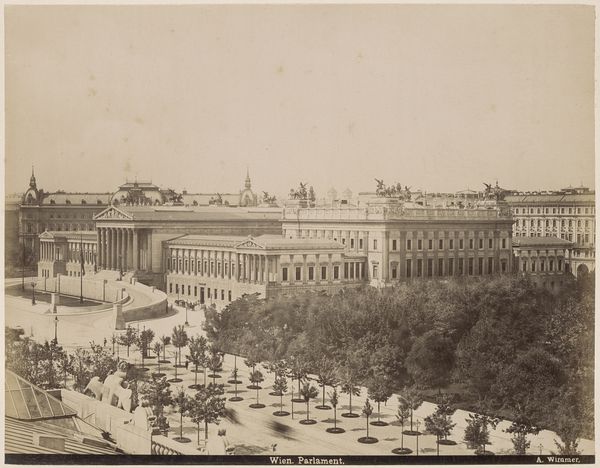
photography, albumen-print
#
pictorialism
#
landscape
#
archive photography
#
photography
#
historical photography
#
19th century
#
park
#
cityscape
#
albumen-print
Dimensions: height 97 mm, width 140 mm
Copyright: Rijks Museum: Open Domain
Curator: Let’s turn our attention to "Engelse tuin in Genève," a landscape captured before 1880 by Auguste Garcin, rendered in albumen print. This type of historical photography provides a window into 19th-century urban spaces. Editor: Right, a wistful, almost ghostly kind of beauty, wouldn't you say? The way the light filters through the trees, and that soft focus… it almost feels like stepping into a dream. Curator: Indeed. And by situating this image within the development of urban parks and green spaces in 19th-century Europe, we can consider the role of such spaces in mediating social class, promoting public health, and reflecting changing aesthetic values. Editor: I love that! I imagine folks promenading along those paths, parasols twirling in the sunlight… do you think they had any idea they were stepping into art, just by being themselves in that moment? Curator: It raises a really interesting point. In many ways, they were. Photography played a pivotal role in documenting the transformation of cities and capturing the lifestyles of those living in them. Garcin’s work then can also be discussed regarding power dynamics and the construction of national identity through landscape representation. Editor: Hmmm... Power dynamics... You know, for all the apparent calm, I almost sense an underlying… tension. The buildings looming over the park, the rather severe geometry…it’s pretty interesting. It isn’t just pretty pictures. Curator: The buildings certainly offer a sense of control and order. Pictorialism as a style tried to elevate photography to fine art by emulating painting with soft focus and manipulated prints. Here it creates both distance and invites questions about societal frameworks influencing lived experiences in urban areas. Editor: Definitely. Makes you think about who got to enjoy this park and under what conditions, right? Curator: Precisely. I think it prompts critical inquiry. Editor: I agree. Now, I'm feeling contemplative. It reminds us of the simple act of breathing in fresh air. Curator: For me it’s a dialogue, that intersection between designed spaces and the lived experience that happens within them. A dialogue still relevant today.
Comments
No comments
Be the first to comment and join the conversation on the ultimate creative platform.

